Physical Address
304 North Cardinal St.
Dorchester Center, MA 02124
Physical Address
304 North Cardinal St.
Dorchester Center, MA 02124
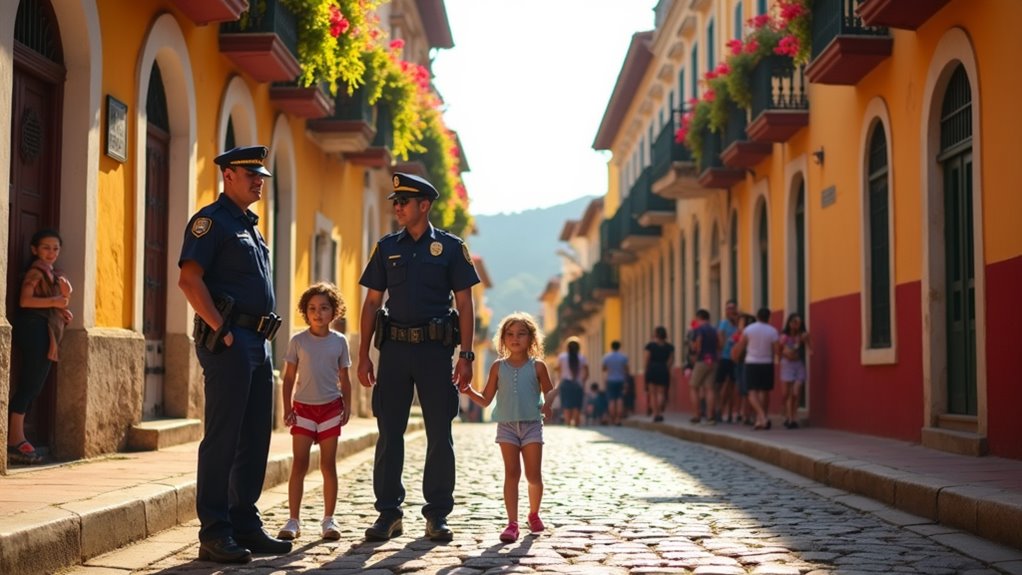
Just how dangerous is Cartagena for travelers? The answer might surprise you as safety varies dramatically across neighborhoods.
Cartagena is generally safe for travelers, especially in areas like the Walled City, Bocagrande, and El Laguito where security is enhanced. You’ll want to exercise standard precautions: avoid displaying valuables, use registered taxis or ride-sharing apps, and stay alert after dark. Stick to well-lit, populated streets at night and be particularly cautious in neighborhoods like El Paraiso and La Popa. Our detailed guide explores everything you need for a worry-free Colombian adventure.
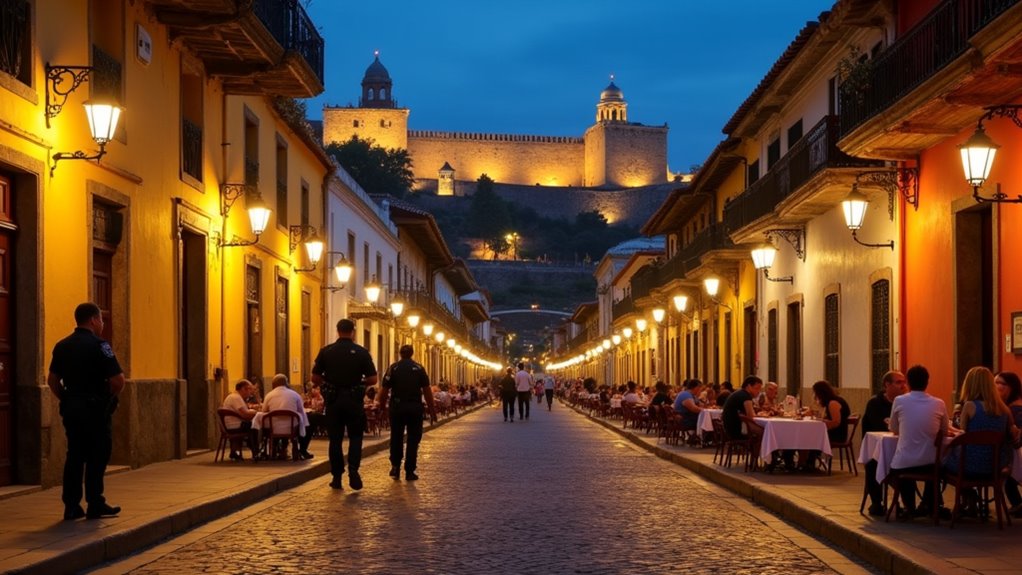
While Cartagena ranks among Colombia’s safer cities, you’ll still need to exercise reasonable caution during your visit. The city’s focus on tourism has led to increased security measures, particularly in popular areas like the Walled City and Getsemani where police presence is highly visible.
You’ll find daytime exploration generally safe, with numerous tourist activities available throughout the city. The atmosphere changes after dark, though, when extra vigilance becomes necessary – especially in less frequented neighborhoods. Tourism is especially important as it contributes to 1.3 million jobs throughout Colombia’s economy.
Most travelers experience Cartagena without incident, particularly when staying in well-established tourist areas. Your experience will likely be positive if you maintain awareness of your surroundings and follow basic safety practices that you’d apply in any unfamiliar urban destination.
To properly assess your safety in Cartagena, you’ll need context about the actual crime situation beyond general impressions. Colombia’s crime rate increased 13.37% in 2021, though total crimes decreased 10.9% from 2022 to 2023, showing fluctuating patterns nationwide. This follows a pattern of variable crime statistics observed between 2018-2021, where rates both rose and fell significantly.
Understanding safety in Cartagena requires examining real crime data beyond surface impressions, as Colombia’s statistics show varying trends over recent years.
Despite these statistics, your risk level depends largely on which neighborhoods you visit and whether you follow basic safety precautions during your stay.
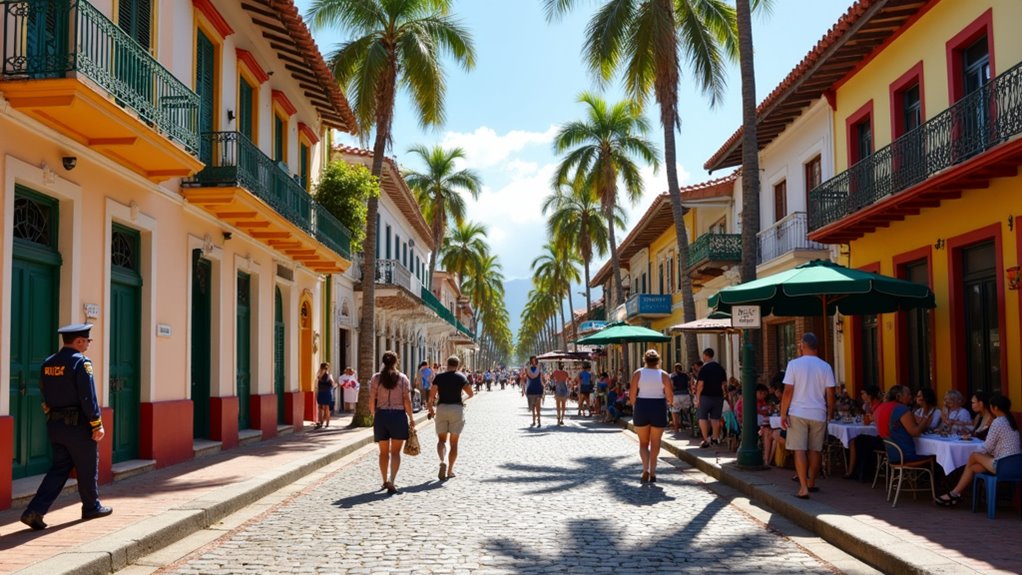
Choosing the right neighborhood in Cartagena considerably impacts your safety and overall experience during your visit. The Walled City tops the list with its historic charm, police presence, and abundance of restaurants and cultural sites.
Bocagrande, El Laguito, and Castillo Grande offer beachfront safety, though at higher prices. These areas are popular with travelers and provide easy access to amenities and transportation options.
San Diego, part of the Walled City, combines historic appeal with safety. If you’re looking for vibrant nightlife, Getsemaní is relatively safe during daylight hours but requires more caution after dark.
For those seeking a more residential experience, Manga and Crespo provide safe environments away from tourist crowds, though with fewer amenities within walking distance. These neighborhoods are particularly suitable for long-term stays with their quieter, more local atmosphere.
Despite Cartagena’s charm and growing tourism industry, several neighborhoods present significant safety concerns for visitors. When planning your trip, you’ll want to avoid these areas, especially after dark.
Safety first! Cartagena’s beauty is best enjoyed by steering clear of its more dangerous neighborhoods after sunset.
While Cartagena has lower homicide rates than many Colombian cities, petty theft remains common. If you must visit these neighborhoods, do so during daylight hours, stay vigilant, and use transportation apps rather than walking alone. These areas stand in stark contrast to the significant police presence in tourist zones like the Historic Center and Bocagrande.
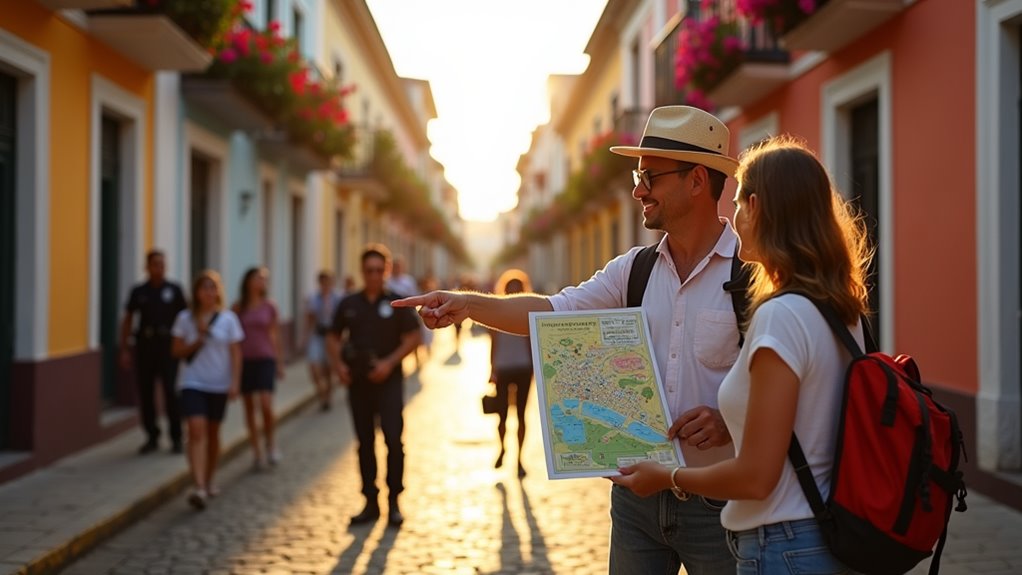
While knowing which areas to avoid is important, understanding how to stay safe throughout your entire Cartagena experience considerably enhances your trip.
Keep valuables hidden and use hotel safes for passports and extra cash. Don’t flash expensive jewelry or electronics, especially in crowded areas where pickpockets operate. Carry only necessary cash and use ATMs inside shopping centers. Criminals often work in teams, distracting victims while accomplices steal your belongings.
Stay vigilant about your surroundings, particularly at night, and stick to well-lit, populated streets. Consider using reputable taxi services rather than hailing one on the street.
Purchase a local SIM card for reliable communication.
Research mosquito-borne illnesses before traveling and pack appropriate repellent. Always have travel insurance covering medical emergencies, and keep embassy contact information accessible should you need assistance.
Understanding Cartagena’s public transportation options is essential for travelers who want to explore the city safely. While the city offers buses, taxis, and motorcycle taxis, each comes with its own safety considerations. Despite having lower crime rates than other Colombian cities, you’ll still need to exercise caution.
Navigating Cartagena requires understanding local transport options and remaining vigilant despite the city’s relatively good safety record.
The UNESCO World Heritage-listed old town is well-patrolled and features extensive security cameras that help make tourist areas particularly safe to navigate.
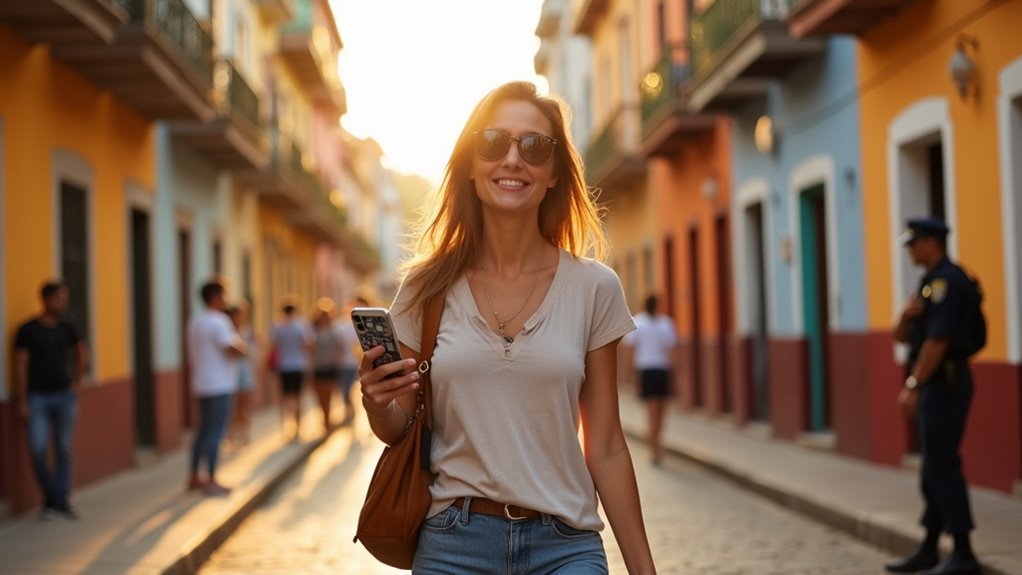
As Cartagena continues to gain popularity among solo female travelers, the city offers a relatively secure environment compared to other Colombian destinations. Most women feel comfortable in tourist areas like El Centro, Getsemaní, and Bocagrande, especially during daylight hours.
For maximum safety, book accommodations at reputable hostels where you’ll connect with fellow travelers. Join group tours rather than exploring alone, particularly at night. Keep your phone charged and be vigilant about your surroundings.
You may experience catcalling; it’s best to ignore it and move on. Dress modestly to blend in with locals and attract less unwanted attention. It’s important to remain calm and confident when facing street harassment, as you would in any major city.
While petty theft occurs in crowded areas, violent crime against travelers is uncommon. Trust your instincts—if something feels off, remove yourself from the situation.
Cartagena’s vibrant nightlife offers incredible experiences, but it requires careful navigation for your safety. Stick to popular areas like Old Town, Getsemaní, and Bocagrande where security is stronger.
When enjoying the city after dark, follow these essential guidelines:
Remember that the old town is particularly well-protected with constant police presence to ensure visitor safety throughout the evening hours.
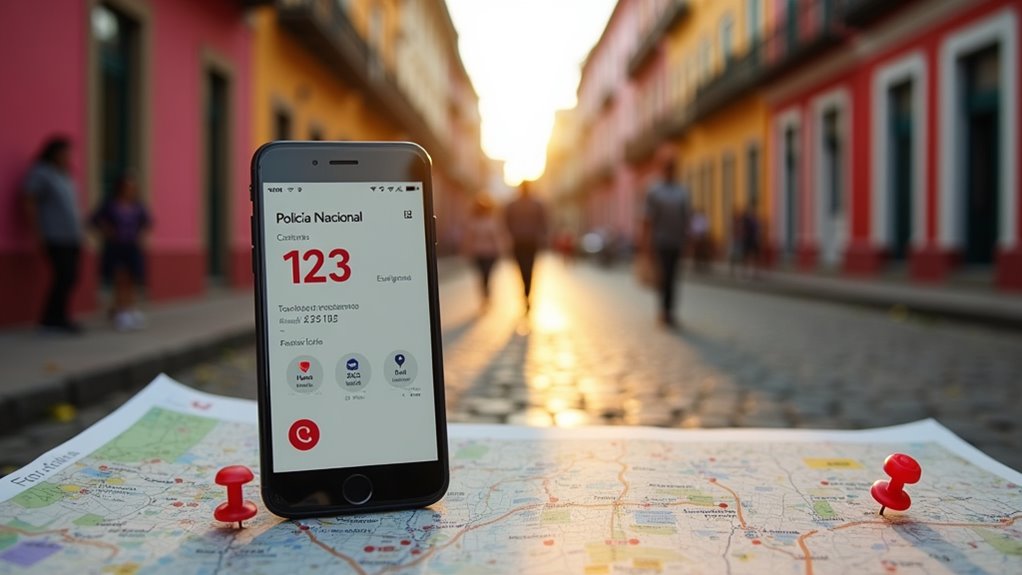
When trouble strikes in Cartagena, knowing exactly who to call can make all the difference. For any emergency, dial 123, Colombia’s national emergency number.
For specific situations, use 119 (fire), 125 or 132 (medical emergencies), or contact Tourist Police at 337-4413. It’s crucial to provide precise location when calling emergency services to ensure responders can reach you quickly.
Several hospitals cater to travelers, including Nuevo Hospital Bocagrande and MediHelp, which specializes in assisting cruise ship passengers.
Hospital Naval offers a hyperbaric chamber for specialized treatments.
Dr. Rafael Andrade provides house calls for English-speaking patients.
If you’re a US citizen requiring consular assistance, contact the US Embassy in Bogotá at +57 1 275 2000 (+57 1 2754021 after hours).
For reliable transportation during emergencies, call legitimate taxis at 642-4242.
Cartagena’s vibrant streets hold both colonial beauty and urban risks. You’ll find warm locals beside potential scammers, pristine beaches near areas best avoided. Don’t cancel your trip, but don’t wander naively. With proper precautions, emergency numbers saved, and neighborhood awareness, you’re set to experience the magic of this Colombian gem safely. The city’s challenges aren’t insurmountable; they’re simply part of the authentic travel experience you’ve been seeking.